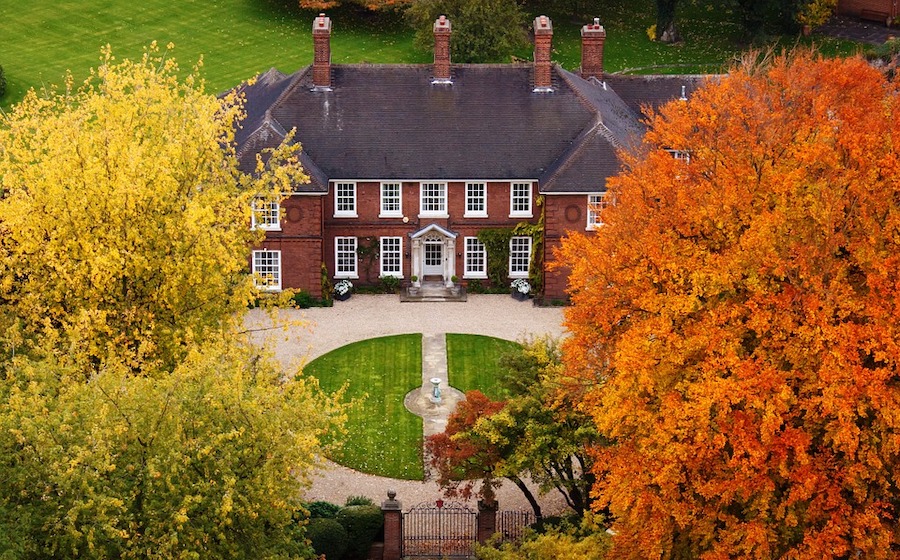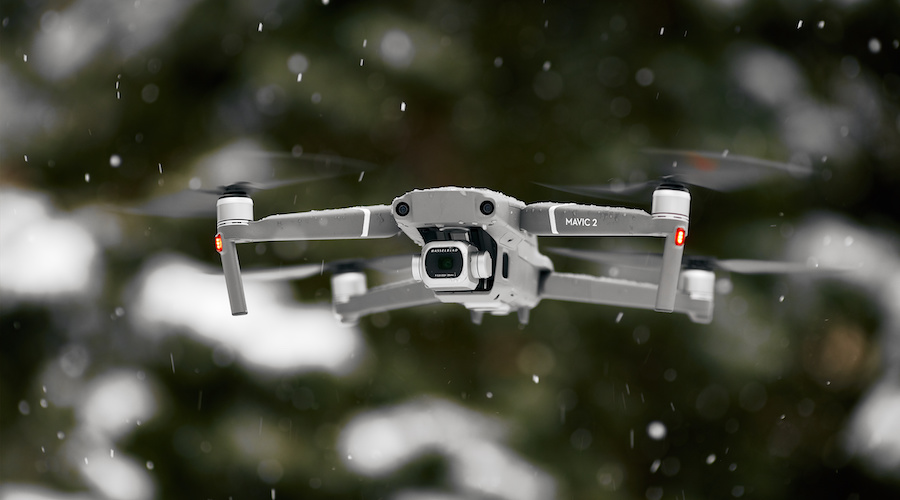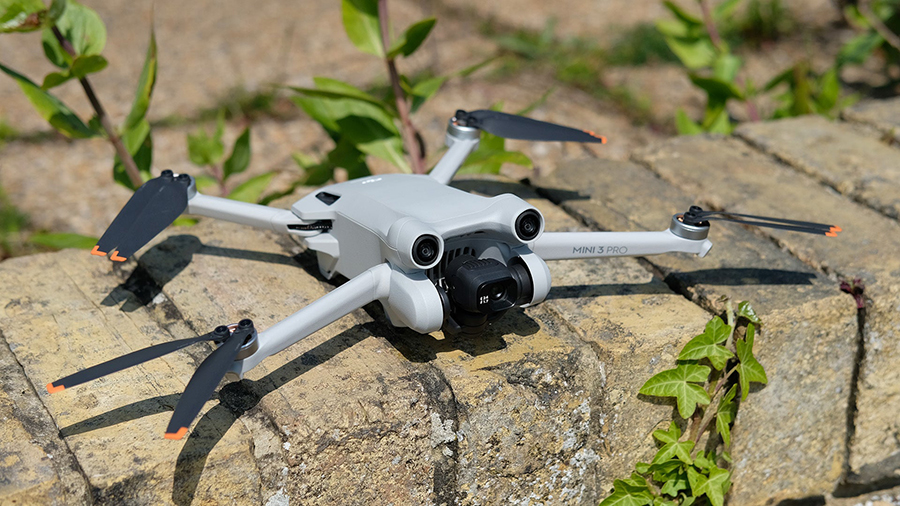-
Why use drones for real estate advertising?
- 1. Gives a better sense of scale
- 2. Shows of the whole property and surroundings
- 3. Shows off what the roof looks like
- 4. Lets you make virtual tours
- 5. Cheaper than hiring a helicopter
-
The challenges of using drones for real estate advertising
- 1. Property surrounded by trees or other houses can be problematic
- 2. Shooting indoors is very hard
- 3. Drones are not suitable for fixed-position photography
-
What kind of drone should you get for real estate advertising?
- 1. DJI Inspire 2
- 2. DJI Mavic 2 Pro
- 3. Yuneec Typhoon H Plus
-
How much can you a drone pilot earn by offering real estate advertising services?
-
Final thoughts
Drones are unlike any other piece of tech that came before them, so it’s rather unsurprising that more and more ways are to use drones are being developed. Now, drone photography certainly isn’t anything new but one particular industry is getting a ton of mileage from it – real estate advertising.
What makes drones particularly suited as a tool for advertising real estate property? What kind of drone should you get if you want to get into real estate advertising? Is a career in real estate viable and profitable for a professional drone pilot?
Why use drones for real estate advertising?
Real estate agents have been taking photos and videos of the properties they are selling for decades, so why would they bother making the switch to drones? After all, drone-based photography requires a good amount of capital. If they outsource this service, they would also have to pay a premium compared to standard photographers. What makes drone photography for real estate advertising worth it?
1. Gives a better sense of scale
Scale is something that is hard to capture from photos or videos taken from the ground, which is the reason why potential buyers often need to visit the properties before they can come to a decision. The human brain naturally looks for something familiar to use as a scale reference, and this may not always be available in static images.
With aerial shots captured by a drone, you can show off so much more detail in just a single shot. In a single frame, you can put together the roof of the house, the garden at the front yard, and those quaint picket fences.
More importantly, potential buyers can put together all these small details to get a sense of how big or cozy the property you’re selling is. Drone shots and videos are the perfect proxies to the terribly time-consuming prospect of having the clients visit the properties being sold.
2. Shows of the whole property and surroundings
Rarely are property buyers concerned with just the property they are buying. Since they are bound to spend millions of dollars to buy a new house or parcel of land, they would also want to make sure that it’s in a nice neighborhood with well-maintained roads and easy access to schools and hospitals.
Moreover, photos and videos captured from the ground are limited in the scope they can represent. Just capturing all the sides of a house could take several photos, and the human brain is ill-equipped to put these images together to form a coherent composite of what the house actually looks like.
With a drone, you can simply fly the drone around the house or property to show off all its details from different angles. By gaining altitude, you can even give your clients a glimpse of what the surrounding neighborhood looks like. By showing a drone video, all the minor details are in full view of the clients and nothing is left to the imagination.
3. Shows off what the roof looks like
The roof is an often-understated part of a house, but a house with a nice roof can fetch premium prices. With a drone, you can easily show your buyers how the roof looks like without having someone climb up there to take photos. An aerial photo also creates a nice contrast between the roof and the sky or the garden. This isn’t something that many real estate agents can offer.
4. Lets you make virtual tours
A virtual tour could be the most effective marketing tool for real estate agents. You can have a drone fly around the perimeter of the house, capturing all of its details from all angles. This can smoothly transition to a shot from up high to show off the roof and the immediate surroundings before zooming in again to start an indoor segment.
An indoor virtual tour can admittedly be tough to pull off. Without any GPS stabilization, the chance of crashing into something indoors is a lot higher. It’s going to take a skilled drone pilot, but the results are well worth the effort.
5. Cheaper than hiring a helicopter
The idea of using aerial photos to see large tracts of real estate property isn’t anything new. While satellite images are conveniently free to use, they are simply too flat, boring, and typically aren’t high-resolution enough to be visually appealing. Before drones, the only viable option was to hire a helicopter and have a professional photographer take shots while the helicopter hovers above.
There are a lot of complications with this approach. Helicopter rental can get very expensive, not to mention the fee you’re also going to need to pay the photographer. Getting a helicopter off the ground can also take quite some time with all the required documentation and clearance from air traffic control.
Drones have no such problem. They are very cheap, can be deployed at a moment’s notice, and don’t put anyone’s life at direct risk. For real estate agents, this reduction in advertising expenses means that they have a larger profit margin for the properties they are selling.
The challenges of using drones for real estate advertising
Now that the idea of shooting drone photos or videos for real estate advertising sounds exciting, we’ll have to pull things back a bit closer to the ground. There are certain circumstances that could come up in a real estate job that you normally wouldn’t encounter as a drone photographer. If you’re taking a job for a real estate agent, here are just a few of the challenges you should expect:
1. Property surrounded by trees or other houses can be problematic
Doing a full revolution of a house using a drone may seem like the simplest and most elegant way to capture the details of a house from all angles, but that might be easier said than done. If there are trees, buildings, or other houses surrounding the property you’re filming, then flying around smoothly may become more challenging.
If you need to avoid obstacles while also keeping your subject in the frame, it would be best to fly with a visual observer. Better yet, you can invest in a high-end camera drone that allows separate controls for the drone and the gimbal.
2. Shooting indoors is very hard
Shooting a drone video indoors is a great way to give potential buyers a tour of the house without physically being there. The problem with this strategy is that flying indoors can be one of the most difficult assignments you can take as a drone pilot.
When flying indoors, your drone will not be receiving any GPS signal and you are almost certainly going to need to fly without obstacle avoidance. With no automatic stabilization, this means that you will need to take active control of your drone at all times.
There’s also the fact that it’s so easy to crash into something when flying indoors. If you’re doing a shoot inside a luxury home, the last thing you’d want is to damage some expensive wallpaper or dinnerware.
3. Drones are not suitable for fixed-position photography
Drones are great for dynamic shots, but what if your client requests a few shots from a fixed position? Despite all the sensors that drones use to maintain a stable hover, they are still prone to drifting, especially when conditions are particularly windy.
For stability, something that’s fixed to the ground still cannot be beaten. Having a DSLR photo and tripod in your arsenal might be prudent so that you can more flexible for your clients.
What kind of drone should you get for real estate advertising?
Real estate advertising may not exactly be such a technically demanding field, but you should still use a professional-grade drone so that you don’t your clients don’t feel short-changed. What should you be looking for in a good drone for real estate advertising? Well, a high-resolution camera would be a good place to stat. You would also want to get a model that is very maneuverable and responsive to your controls, not to mention easy to use and just simply looks professional. We’re selling millions of dollars worth of property here, so don’t be sloppy.
1. DJI Inspire 2
Getting a DJI Inspire 2 for a real estate photography job might qualify as going way beyond what is needed, but it’s great for showing that you mean business. The Inspire 2 is one of DJI’s most sophisticated and professional-looking drones with its aluminum frame, carbon fiber arms, and retractable landing gear. The Inspire is a very agile drone, although it’s a bit too large to fly indoors.
The default camera of the Inspire 2 is the Zenmuse X5S, which can shoot 5.2K video at 30 fps and 4K video at 60 fps. This is certainly one of the best cameras to ever grace a drone. Used in real estate, it can capture videos in vivid quality and smooth framerate. If there was a drone that can make real estate photos and videos stand out from the rest, then the DJI Inspire 2 certainly fits the bill.
2. DJI Mavic 2 Pro
The Mavic 2 Pro is a premium entry into DJI’s super-popular Mavic line of ultra-portable drones. Being ultra-portable is one of its chief advantages. If you have to travel to several locations in a day, you’ll be glad for the fact that your drone weighs next to nothing and can fit inside a regular backpack.
Despite the small size, the Mavic 2 Pro boasts of a Hasselblad camera with a full 1-inch CMOS sensor. The 4K videos and 20 MP stills that the Mavic 2 Pro can capture are among the best when it comes to ultra-portable drones and puts it in the same league other full-sized professional-grade drones. The wide ISO range of the camera can also be useful when shooting in challenging lighting conditions.
The small footprint also makes the Mavic 2 Pro an excellent tool for indoor drone flight. Its array of obstacle avoidance sensors is a bit more robust than many other drones, which should make it a little easier for you to navigate across a treacherous indoor environment.
3. Yuneec Typhoon H Plus
Last on the list is one of Yuneec’s entries into the market of professional-grade drones. The Typhoon H Pro sports the six-rotor design which has been a signature of the Yuneec brand. The extra stability provided by the six rotors and the fact that there’s a redundant motor makes the Typhoon H Plus one of the most reliable drones. When you’re flying around expensive houses, you will want to have a drone that is as resistant to crashing as possible.
Similar to the Mavic 2 Pro, the camera of the Typhoon H Plus features a 1-inch CMOS sensor that can capture 4K video at 60 fps and 20 MP stills. It also comes with Intel RealSense technology, which is one of the most advanced obstacle avoidance systems that the drone industry has ever seen. Simply put, the Typhoon H Plus is the kind of drone that you get when you want to make a good first impression.
How much can you a drone pilot earn by offering real estate advertising services?
This is always a difficult question to answer because of all the factors that play a part in determining how much you should charge your clients. Like with any other type of job, your level of skill and amount of experience will have to be considered when setting your price.
If you are planning to offer your services as an independent contractor, then you can start at a rate that should, at least, let you make a profit. To determine this rate, take stock of all the expenses you’ve made for your business, both one-time and recurring, and add a 10% to 20% profit margin. You’ll have to make an estimate of how many hours or jobs you can do in a year – such a risk is something inherent to being an independent contractor.
A price range of $30 to $50 per hour sounds perfectly reasonable if you’re just starting out. As you build your portfolio and skillset, you can start dictating higher rates of up to $150 per hour. Conversely, you can also ask to get paid a one-time fee to finish a job. Something in the range of $300 to $800 for a package of aerial photos and videos is close to the standard for the real estate industry.
Final thoughts
Drone photography is such a diverse and fragmented field that you might find yourself fleeting from one kind of job to another without really building any specialization on a specific type of photography. A more effective strategy is to pick a small sub-category of photography and stick with it. With all the benefits we’ve listed here, perhaps more drone photographers should consider real estate advertising as their niche.
Although not technically demanding, taking photos of houses, mansions, and large tracts of land present its own set of unique challenges. Not the least of these is the fact that you’ll likely spend a lot of time flying over luxury homes. If you’re going into real estate advertising, you need to realize that you have a very small margin for getting into a crash. The last thing you want is to damage the roof or window of a house that you cannot afford to replace.



